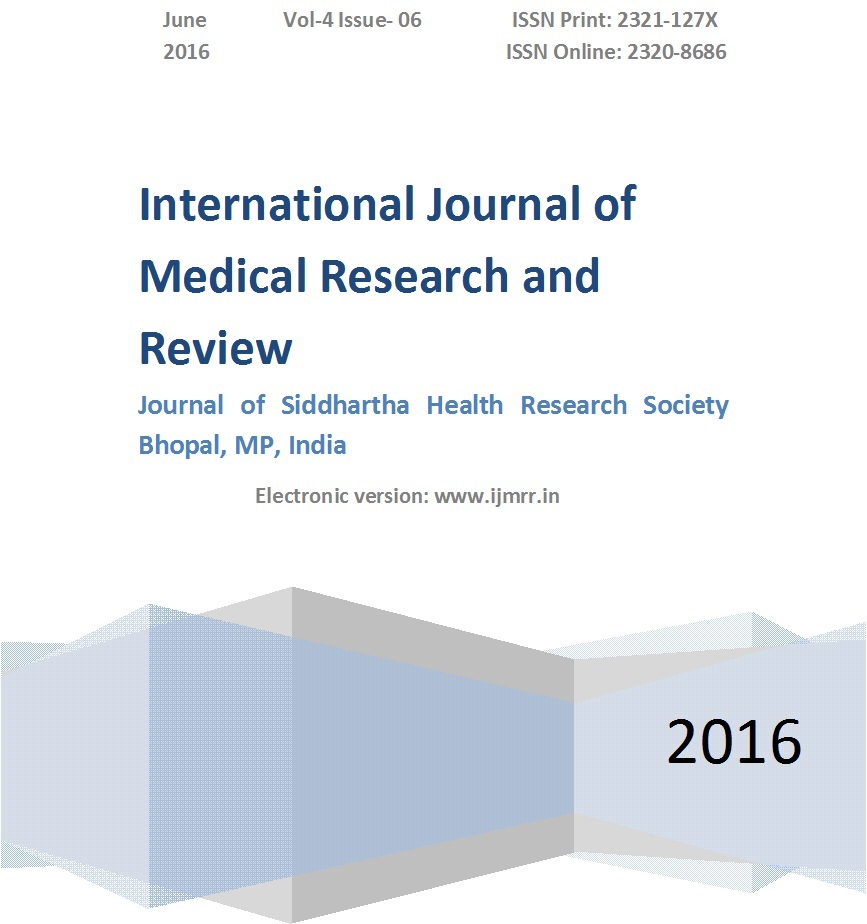Role of fine needle aspiration cytology in assessment of cervical lymphadenopathy
Abstract
Background: Lymphadenopathy is one of the commonest clinical presentations of patients attending the outdoor department. The causes vary from simple treatable infections to malignancies and hence need to be speedily investigated. Fine needle aspiration cytology (FNAC) is simple, quick, inexpensive and minimally invasive technique that can be used as an outpatient procedure to diagnose them. The Aim and objective of this study is to assess the various causes of cervical lymphadenopathy through FNAC, and to see the distribution of lesions with respect to age and gender.
Method: The present randomized study was undertaken to study non neoplastic and neoplastic lesions of enlarged cervical lymph nodes by FNAC in 135 patients presented with cervical lymphadenopathy in Shree Krishna Hospital, Karamsad over a period of March 2006 to June 2007.
Result: Tuberculous lymphadenitis, reactive lymphadenopathy, suppurative lymphadenitis, lymphoma, leukemic infiltration and metastatic lymphadenopathy were seen in 38.52%, 24.45.%, 3.70%, 2.22%, 0.74% and 30.37% respectively. Tuberculous lymphadenitis was seen most often in third decade and reactive hyperplasia in first two decades of life. Metastatic lymphadenopathy was seen predominantly above forty years of age. Metastatic lesions of lymph nodes were seen to be more common in males. Squamous cell carcinoma is the most common metastatic lesion.
Conclusion: The present study highlights the usefulness of FNAC in early diagnosis in cases presenting with cervical lymphadenopathy. It can differentiate a neoplastic from a non-neoplastic process and therefore influence the patient management and prevent them from being subjected to unnecessary surgery.
Downloads
References
2. Russel J. Orell, S. Skinner, J. Sehsadri R. Fine needle aspiration cytology in the management of lymphoma, Aust NZ J. Med. 1983 Aug; 13(4): 365 -68.
3. Arora B, Beena KR. Utility of FNAC in Lymphadenopathies . J. of Cytology. 1999; 16(2):61-66.
4. Bhaskaran CS, Kumar HG, Sreenivas M. Kamleshwari, R. Rao G, Aruna CA. Fine needle aspiration cytology. Review of 1731 cases. Indian J. Pathol Microbiol. 1990 Oct; 33(4): 387- 97
5. Patra AK, Nanda BK, Mohapatra BVK , Pnada AK. Diagnosis of lymphadenopathy by fine needle aspiration cytology . Indian J. Pathol . Microbiol. 1983 Oct; 26(4):273–278.
6. Ruchi khajuria, K.C.Gosswami, K.Singh ,V.K.Dubey .Pattern of Lymphadenopathy on Fine Needle Aspiration Cytology in Jammu. 2006;8: (3):157- 59.
7. Gupta AK, Nayar M, Chandra M. Critical appraisal of fine needle aspiration Cytology in tuberculosis. Acta Cytol 1992 Jun; 36(3): 391-94.
8. Prasad RR, Narasimhan R, Sankran V, Veliath AJ. Fine needle aspration cytology in the diagnosis of superficial lymphadenopathy: an analysis of 2418 cases. Diagno Cytol 1996 Dec;15(5):382-86.
9. Paul PC, Goswami BK, Chakrabarty S, Giri A, Pramanik R. Fine needle aspiration cytology of lymph nodes - An institutional study of 1448 cases over a five year period J Cytology 2004;21:187-90.
10. Kline TS, Khannan V, Line IK. Lymphadenopathy and aspiration biopsy cytology review of 376 superficial lymph nodes. Cancer 1984; 54(6):1076-81.
11. Betsill WL, Hajdu SI. Percutaneous aspiration biopsy of lymph nodes. Am J. Clin Pathol 1980 April; 73(4): 471 - 79.
12. Shilpa G ,Nataraju G. Pattern of Lymph Node Diseases in a Tertiary Level Referral Center: a cytological study of 943 cases. Int J Biol Med Res. 2013; 4(3): 3448 - 52



 OAI - Open Archives Initiative
OAI - Open Archives Initiative


